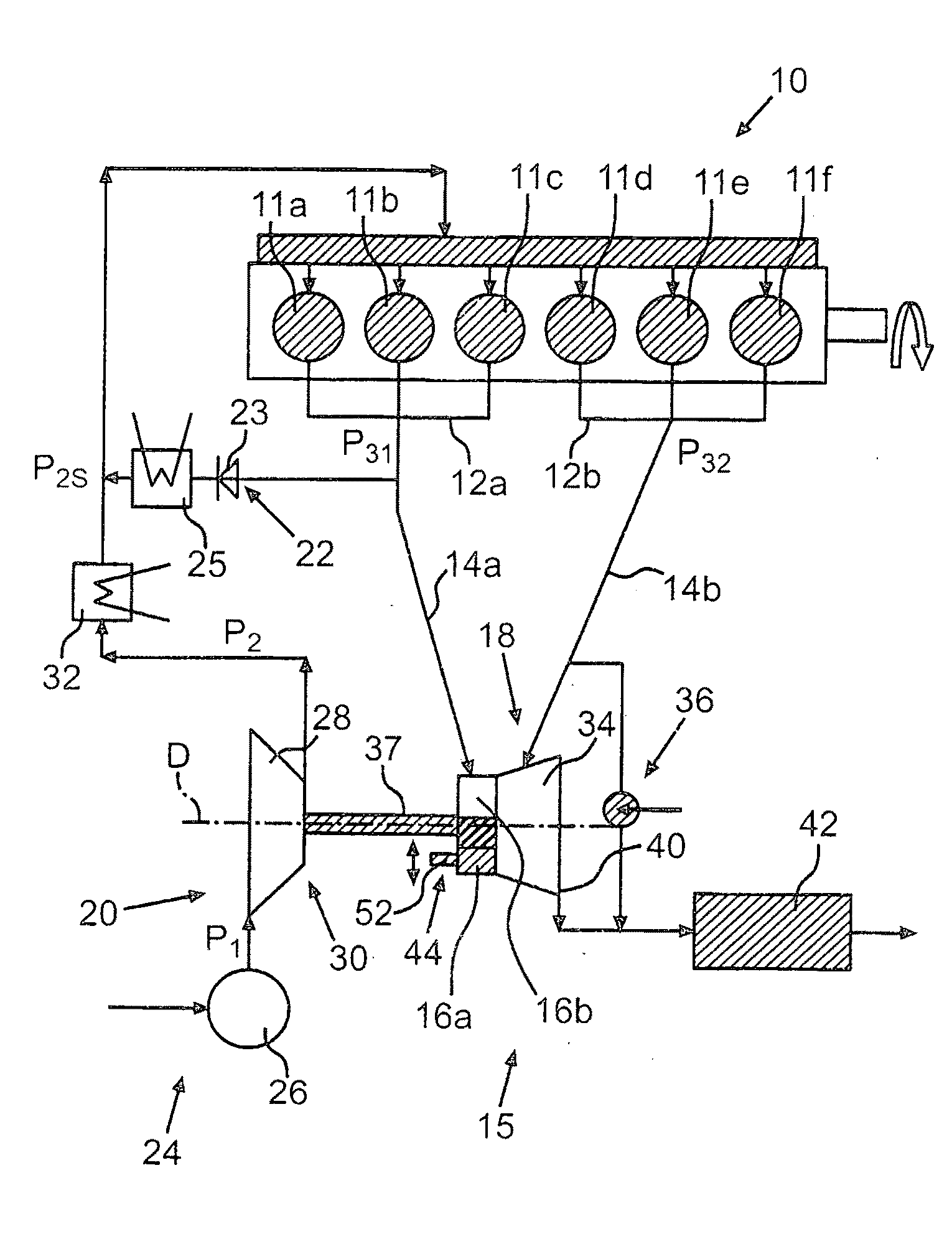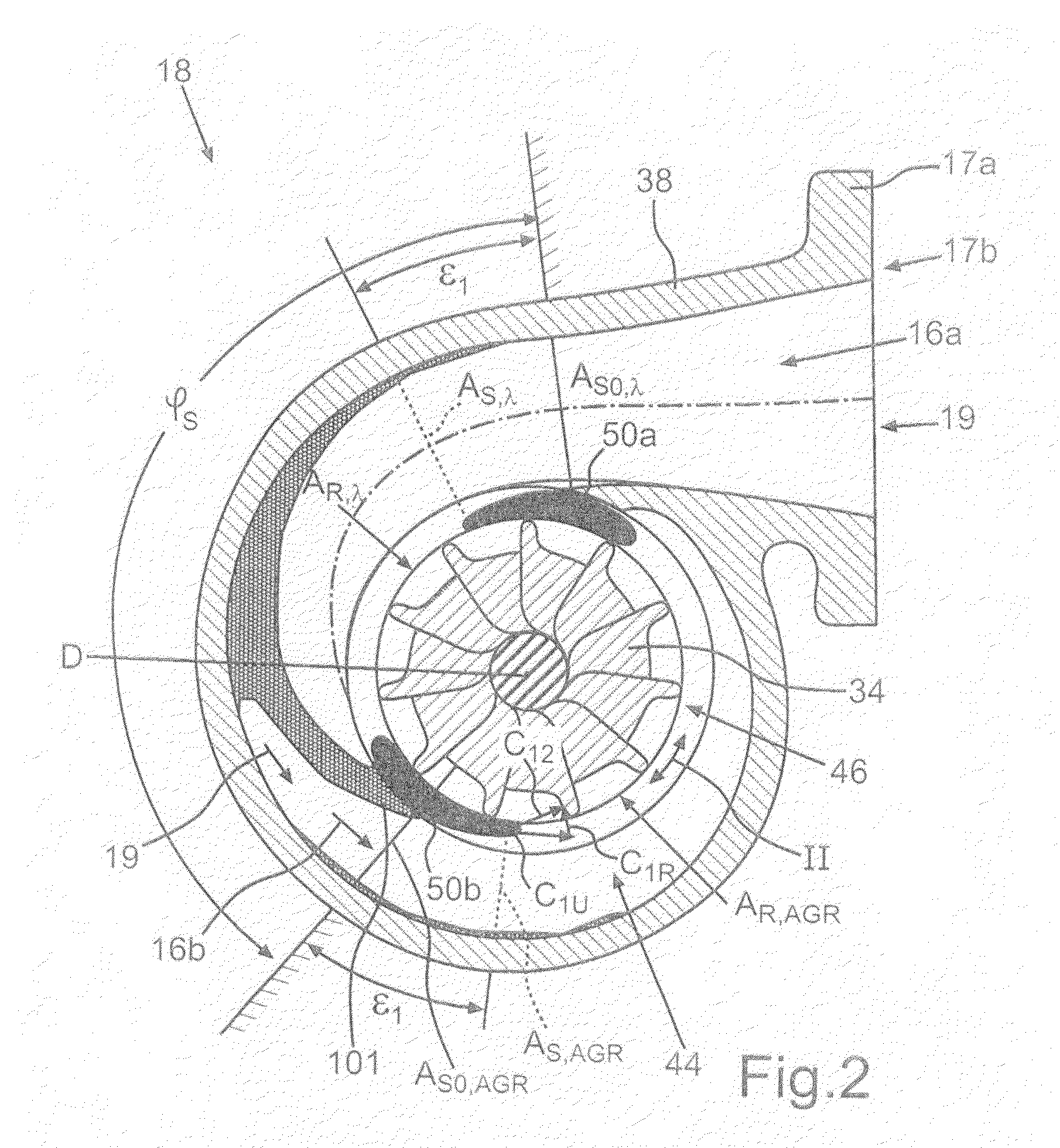Internal combustion engine with an exhaust gas turbocharger
a technology of internal combustion engine and turbocharger, which is applied in the direction of machines/engines, mechanical equipment, and non-fuel substance addition to fuel, etc., can solve the problems of increasing the geometrical scale of the turbine of the exhaust gas turbocharger, the inability to meet the needs of the lower load and speed region of the internal combustion engine, and the inability to achieve optimal service. optimal, the effect of increasing the operating area
- Summary
- Abstract
- Description
- Claims
- Application Information
AI Technical Summary
Benefits of technology
Problems solved by technology
Method used
Image
Examples
first embodiment
[0034]FIG. 1 shows in principle an internal combustion engine 10 for a commercial vehicle. The internal combustion engine 10 may be in principle a Diesel, a spark ignition or a compression ignition engine and as shown comprises 6 cylinders 11a-f of which the cylinders 11a-c are combined in a first cylinder group 12a and the cylinders 11d-f in a second cylinder group 12b. Two exhaust gas lines 14a, 14b of an exhaust gas tract 15 of the internal combustion engine 10 are associated with the cylinder groups 12a, 12b, of which the first exhaust gas line 14a is coupled to a first spiral channel 16a formed as a partial spiral via corresponding manifolds and the second exhaust gas line 14b to a second spiral channel 16b, also formed as a partial spiral of a turbine 18 of an exhaust gas turbo-charger 18. The spin-determining spiral channels 16a, 16b thereby comprise connection flanges 17a, 17b arranged adjacent to each other and sealed against each other in a gas-tight manner. The connectio...
third embodiment
[0043]FIG. 8 shows schematically of the internal combustion engine 10 in principle according to a Compared to the previous embodiments, the gas guiding device 36 is formed as a blow-by and blow-off device, so that the outlets of the three cylinders 11d-f can optionally be connected to one or several of the spiral channels 16b-d and / or exhaust gas can be guided past the turbine 18. The turbine 18 of the exhaust gas turbocharger 20 comprises the spiral channel 16a formed as an AGR spiral and connected to the exhaust gas line 14a, which—as described previously—is designed due to the AGR requirement as a partial spiral with the looping angle φS (see FIG. 4), which is chosen clearly below a full spiral of 360° due to the desired AGR capability (e.g. EPA07-limit value fulfillment) with an optimum design. The turbine 18 further comprises three further spiral channels 16b-d formed as λ-spiral segments with respective looping angles φ of about 120°, which are shown in FIG. 10 in more detail...
PUM
 Login to View More
Login to View More Abstract
Description
Claims
Application Information
 Login to View More
Login to View More - R&D
- Intellectual Property
- Life Sciences
- Materials
- Tech Scout
- Unparalleled Data Quality
- Higher Quality Content
- 60% Fewer Hallucinations
Browse by: Latest US Patents, China's latest patents, Technical Efficacy Thesaurus, Application Domain, Technology Topic, Popular Technical Reports.
© 2025 PatSnap. All rights reserved.Legal|Privacy policy|Modern Slavery Act Transparency Statement|Sitemap|About US| Contact US: help@patsnap.com



